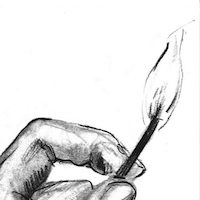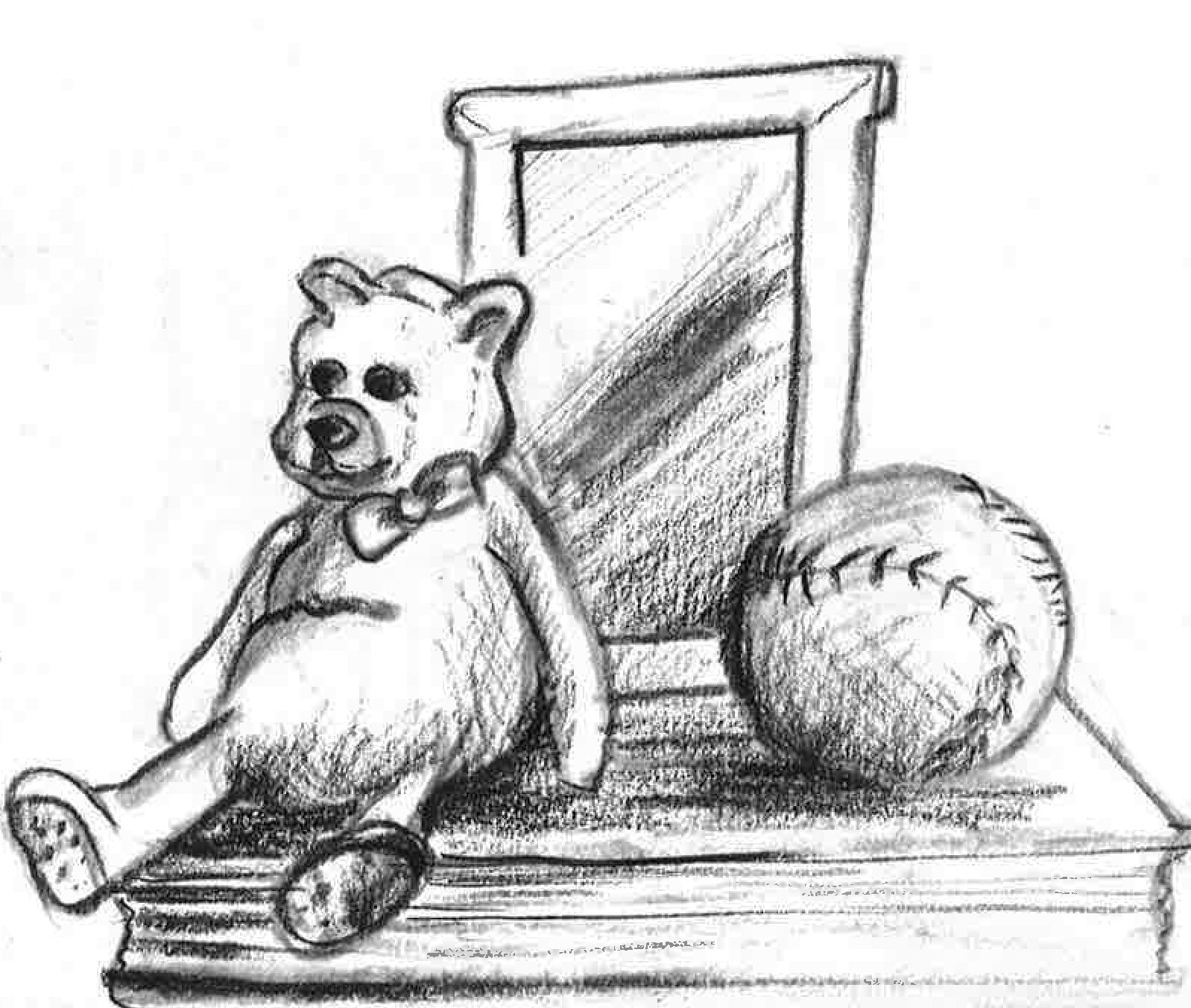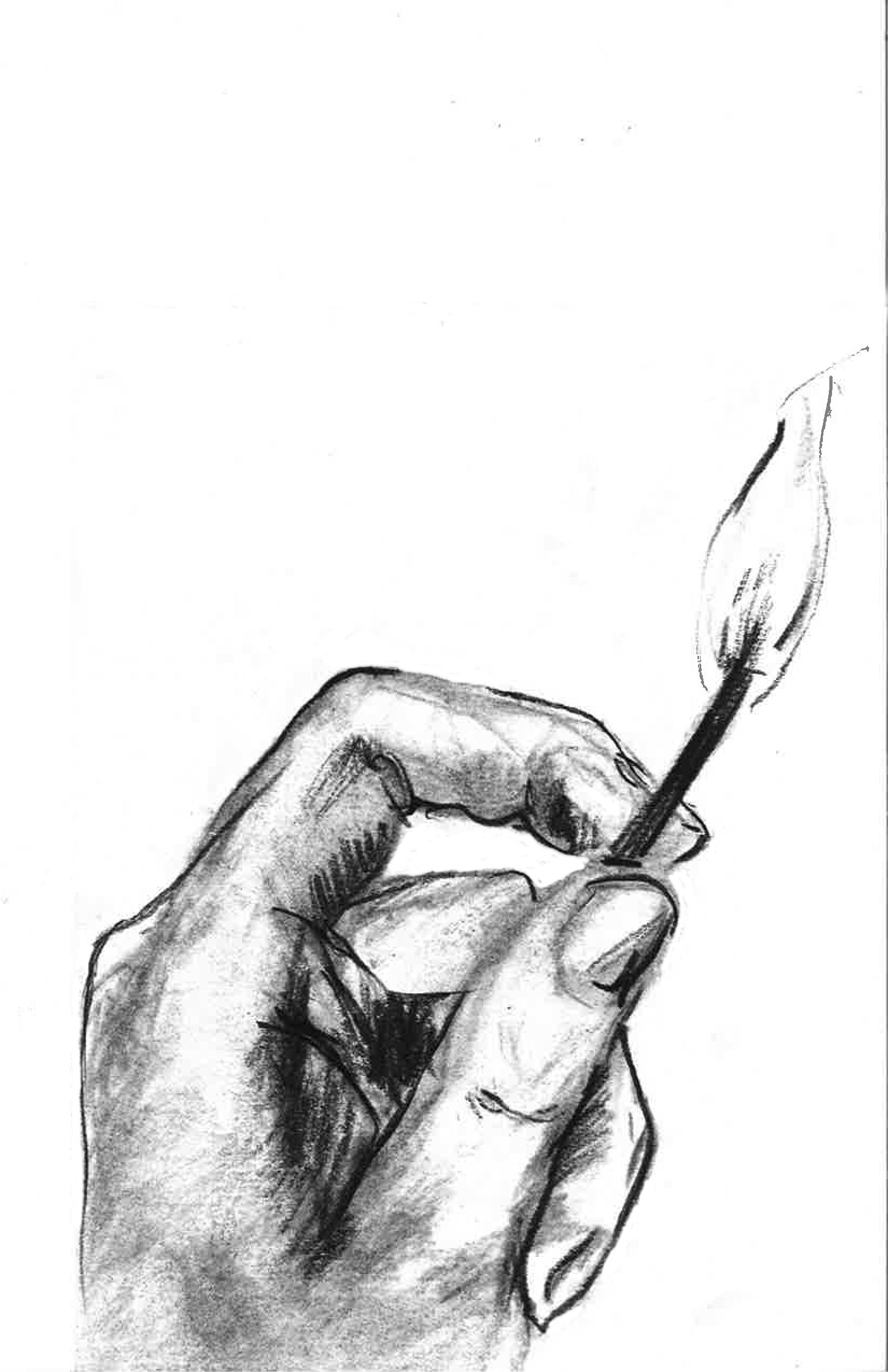
When my best friend of 10 years killed herself, I inherited her shoes. The day of her funeral, her brother opened his car trunk, lifted out two bulky black plastic trash bags and put them in the back of my Bronco. Beat-up All-Stars, lithe sling-backs, clunky oxfords. Wrinkled knee-high leather boots that still held the shape of her.
The bags stayed in my truck for months. Then I moved them to the floor of my closet. Eventually, I sorted through them, keeping a few pairs I could wear and a few more that seemed to conjure her up most easily when I looked at them. Today, I have only those boots, which are more like artifact, and her black leather Mary Janes, which I still sometimes wear. She was a ballet dancer, after all. Maybe I could slip some of that grace on myself.
*
Shoes are stories, evidence. Cast-off heels in a front hallway are how we know that someone’s home, and from where. Empathy isn’t just walking in someone’s path, but in her shoes.
*
Rebecca’s death came barely a year after two older family members died in quick succession: Addye, my grandmother, and Harry, who was actually my great uncle, but close enough to my father’s age (and close enough to my family) that we just called him Uncle. Both of them—because of how long they’d lived, because of their Depression-era credentials, but also their aesthetic—were collectors: roomfuls of antiques, but also of what I like to call “the marvelous junk.” A hand-crank eggbeater from the 1930s. A set of china with a full array of classic teacups and saucers. End tables without end.
The rooms of my house became exhibits. I set up my grandfather’s reading lamp behind a large chair, just as he’d had it for years in his own house. Tacked up a little radio next to the kitchen sink, where Addye had it hung in her kitchen. I brought it all home with me. Mainly because I was the only one in the family who seemed to not have enough stuff, to not yet have enough of what it took to make a home. But also because we fill the spaces that people leave behind with the things they touched.
A house is just a set design, and sometimes we run lines with ghosts.
*
And so, sometime between my early 20s and my mid-30s, I went from being the one with not enough stuff to the one who had all of the stuff. I used to be able to fit everything I owned into my 1988 Ford Escort. When I moved into my first studio apartment for graduate school, that compact car evolved into my car plus my parents’ crammed-full minivan following behind. When I moved across Iowa City into an actual one-bedroom, the caravan became a cargo van. By the time I manifested my destiny from Virginia to San Francisco in the late 90s, I was steering a 10-ft. Penske truck through Wyoming hell-mouth thunderstorms. Twelve addresses in 15 years. The last two, I hired professional movers who used a truck so large you have to have special license just to drive it.
*
When I need a fresh perspective, I physically give myself one. I rearrange rooms, even swap their traditional uses for one another. But it all has a weight. The 70-year-old upright piano has a weight and it is best calculated at un-budge-able.  The dining room hutch has a weight that could be set at “Maybe I will move that one tomorrow.” Couch technology, at least, has progressed such that it is easily slid against a new wall, and then another—furniture Ice Capades.
The dining room hutch has a weight that could be set at “Maybe I will move that one tomorrow.” Couch technology, at least, has progressed such that it is easily slid against a new wall, and then another—furniture Ice Capades.
I have locked myself out of my house once or twice before, but only recently realized it is also possible to lock myself in. To fill a space so precisely that rearranging rooms cannot happen unless and until there is less to rearrange. Drawers are a kind of seduction until you put something inside. Shelves can’t hold themselves. Empty flowerpots are filled with your fear of commitment.
I decided to start shedding my things. The weight of them, and the weight of them.
Start with the actual garbage: the uncleanable, the parts-to-things-that-no-longer-exist, the truly unfixable. Then: the duplicates. Ice trays are reducible fractions, as are coffee mugs, pillowcases. Move on to the unworn, the over-worn, the paper.
What is left is your reckoning with the marvelous junk. The shapes the past has poured itself into and then hardened, the way calves fill boots. Then, everything is a ticket stub from some show you barely remember but can’t bear the thought of forgetting. Or a t-shirt you sleep in that belongs to a ghost. Proof, but of what?
*
Photographer and former Ralph Lauren menswear designer Foster Huntington has an online photo project called The Burning House, which he has also compiled into a book. In it, he assembles submissions from a wide swath of people who’ve still-lifed visual representations of what they would choose to escape with from their home should it catch fire.
The items people select represent the personal conflict, he says, “between what’s practical, valuable, and sentimental.” The results, of course, come after some time of clever or earnest deliberation—not in the physical and emotional urgency of a life-threatening incident. These belongings, likely, would also need to be gathered from various far-reaches of a home—the cat, a passport, a 1902 edition of Beatrix Potter’s The Tales of Peter Rabbit.
Much of the stuff of each exhibit though, perhaps surprisingly, is entirely replaceable—especially with the advent of cloud technology: iPhones, laptops, digital cameras. Some of the items are much smarter picks than I probably would be able to pull together in that moment of panic—car keys, for instance. Some of it comes off as comically unrealistic at best—nail polish, sunglasses, disposable pens. Disposable pens! And one person added a cup of coffee and a donut. I mean, I do love coffee, and I’ve been known to grab a donut as I head out the door, but not when that door is on fire.
Some of it even seems oddly survivalist, as if once a home is destroyed in a fire, the owner is sentenced to live by her wits from then on (a lot of Swiss Army knives and Leatherman tools, which the contributors did not report as having sentimental value—as they did with other belongings—in the lists that accompany each photo).
 Even though I didn’t create an absolutely definitive list for myself after viewing the project, I couldn’t help but puzzle over how this distilling down of necessary things might play out in my own home. My dogs I don’t consider to be stuff, though I would surely focus on saving them above all else. My truly irreplaceable sentimental belongings (photos I haven’t scanned, certain meaningful gifts from family and friends) are scattered across my home in such disarray that I’m not even sure I could tell you where they all are right now—should I buy a fire-safe box in which to store them? Probably, yes. Have I backed up all my computers to a cloud, or at least a portable drive I could grab? Not completely, no.
Even though I didn’t create an absolutely definitive list for myself after viewing the project, I couldn’t help but puzzle over how this distilling down of necessary things might play out in my own home. My dogs I don’t consider to be stuff, though I would surely focus on saving them above all else. My truly irreplaceable sentimental belongings (photos I haven’t scanned, certain meaningful gifts from family and friends) are scattered across my home in such disarray that I’m not even sure I could tell you where they all are right now—should I buy a fire-safe box in which to store them? Probably, yes. Have I backed up all my computers to a cloud, or at least a portable drive I could grab? Not completely, no.
I have a dozen or more unfinished writing notebooks with fragments of ideas, but I rarely return to them, so how valuable can those scraps actually be? Right now, they’re a bit like saving orange peels because they were once part of a fruit I already ate. Would I miss them after a fire if I don’t miss them now? Which category exactly—practical, valuable, sentimental—do each of my belongings belong to?
*
The poet and professor James Galvin, during a graduate school seminar he was teaching, once said something along the lines of: “You could burn every copy of your favorite poem, and it would still exist.” It terrified me at first—that if that happened, it would be difficult to reproduce an accurate version of the exact piece. That we would lose so much. Imagine “Prufrock,” or “One Art,” just—gone. But what’s stayed with me about that notion is this: the poem would still exist, because it would have already begun the work it was meant to do inside of me, that it was meant to do in the world—like a virus, both good and bad. Is it helpful or harmful when a thing becomes only a souvenir?
*
After a Hindu service at a local funeral home in Charlottesville, Rebecca was cremated. It was done in our view. A couple dozen of us filing downstairs to the crematorium. A small room with a large oven. In place of the polished casket: a narrow, lidless cardboard box now holding her body, still blushed with the rose petals we’d laid on her during the service. Her brother and the funeral director pushing her body, the box, inside the crematorium. A steel door with a handle like you’d find on a walk-in freezer clamping shut.
I remember more prayers. I remember staring at the large push-button next to the crematorium door. More prayers, more crying, and then her brother being asked to press the button. Her brother pressing the button. Her body—practical, valuable, sentimental—gone.
*
Not just the body, but what is on the body. My first tattoo, at age 18, was a black-and-white sun on my left shoulder. Rebecca’s first tattoo, at age 18, was a small Chinese dragon on her right shoulder. Her second and last tattoo was an orange sun on her left shoulder. My first tattoo after her death was a large Chinese dragon on the inside of my right arm.
That we would lose so much.
Ink is personal. A controlled pain, a control-taking of the body and how it is viewed. The body’s version of what you would take with you in a fire, if by body you mean heart and by fire you mean getting older.
*
For six years, I lived with a man who understood completely the style and kind and age of things I longed to have in our house. He’d bring them home to me as, I do believe, a way—maybe the only way—he knew of showing love. Presents to me: a tiny pair of antique gold scissors, or an old dark-wood floor cabinet we turned into the headboard of our bed.
The more things on display in the house, though, the less he seemed to be able to see me through the near-clutter. The last couple of years we were together, I became quite ill with thyroid disease and anemia, but didn’t know what was happening to me at the time.
The symptoms seemed to come on in geological time, but eventually they accumulated on me, the way a house turns up structural problems once an inspection is done. I was beyond fatigued. My hair was falling out. My skin was papery. I was barely eating, but also gaining more weight than I’d ever had on me before. Initially, I blamed it on depression from our failing relationship. I blamed it on aging. I blamed it on work stress. All the reasons that women seem to want to accept before considering that a problem could just be a failure of the body rather than a perceived failure of the soul.
This man I was living in the same small house with, sleeping in the same warm bed with, exchanging declarations of love with, though, did not see it as anything to question. He did not see any of it at all. How does a person still retain the ability to select the perfect gift for a lover when the lover is invisible? When the lover is neither practical, nor valuable, nor sentimental?
*
The taboo part. The ungrateful part. The part that won’t be spoken aloud.
 The fantasy of wanting my house to burn down. The fantasy of telling the world to light the match. Of wanting more fires to survive, just to prove I can. The fantasy of being able to start over. The fantasy of fitting everything into a car once again. The fantasy of having the decision to start over made for me, beyond my control.
The fantasy of wanting my house to burn down. The fantasy of telling the world to light the match. Of wanting more fires to survive, just to prove I can. The fantasy of being able to start over. The fantasy of fitting everything into a car once again. The fantasy of having the decision to start over made for me, beyond my control.
The fantasy that is able to exclude the pets from any disaster scenario. The fantasy that is a luxury to even imagine. The one I still mentally put myself through, again & again, like practicing an escape route in a fire drill. The opposite of a lottery-winning fantasy, but they are fraternal twins.
In the reoccurring dream, Rebecca shows up at my house one day, just materializes at my door, explaining it’s all been a great misunderstanding. She’s just been away for a spell, you see. And there is so much for her to learn, now. So much to figure out about how to start living again. She will live in my house. She’ll wear the same dress day after day, because she gave all of her clothes away before she left. I’ll lend her a pair of shoes.
***
Rumpus original art by Clare Nauman.




